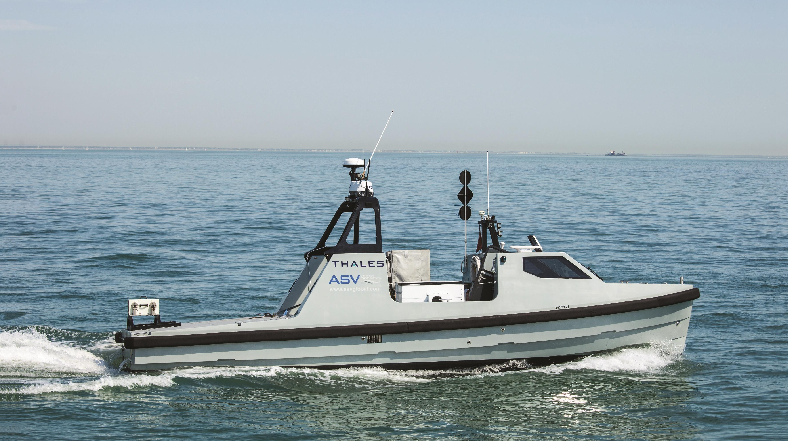Prev-Talk | Next-Talk | All-Talks | Talks-Sorted | MOOS-DAWG'19
Talk-03: Deliberative Path Planning and MOOS-IvP for an Unmanned Surface Vessel Performing MCM Operations
Speaker: Dr Ed Rimmer, Thales UK
Maritime mine counter measures (MCM) have traditionally employed large manned vessels but advances in artificial intelligence have enabled an evolution towards the use of smaller autonomous unmanned surface vessels (USV) allowing personnel to be kept clear of dangerous areas. For a number of years, Thales has been performing self-funded research and development for one such USV (Halcyon) based on MOOS-IvP.

This talk focuses on a real-time deliberative path planning algorithm and its integration with a MOOS-IvP behaviour based control layer, and describes additional MOOS-IvP behaviours that have been developed to support the USV’s MCM mission.
The USV is fitted with numerous sensors for situational awareness, e.g. radar and AIS. For MCM operations the USV is able to deploy a number of payloads, for example a towed synthetic aperture sonar. The correct and safe operation of these payloads depends on the USV operating within strict navigational constraints on its motion. These motion constraints are achieved using a combination of the deliberative path planner as well as ‘out of the box’ and bespoke MOOS-IvP behaviours.
The talk will describe our experiences during sea trials at unmanned warrior in 2016 when using MOOS-IvP prior to the development of the deliberative path planner, and the challenges encountered that gave rise to its production. For example a missed waypoint in conjunction with a navigational constraint requiring a large minimum turn radius is a difficult situation to recover from with MOOS-IvP behaviours alone. This and other operational use-cases of the deliberative path planner related to turning at the end of a MCM survey track and towed sonar launch and recovery will be described. The deliberative path planner takes a USV start position and pose and an end position and pose together with sensed environmental conditions such as ocean currents and nearby obstacles and computes a path for the USV to follow that respects the payload navigational constraints at the same time as avoiding obstacles. When a towed sonar is deployed it is the USV path through the water as well as the path over the ground that is significant and the planner must take this into account.
Once the deliberative path planner has determined the over the ground path that meets the through the water navigational constraints, the waypoints that comprise the path are drip-fed in to the MOOS-IvP behavioural layer to be achieved by the waypoint behaviours in conjunction with speed through the water limiting behaviours.
Finally the performance of the deliberative path planner during simulation in conjunction with the MOOS-IvP behaviours will be described.
Categories:
- USVs,
- MCM
- Mission Planning